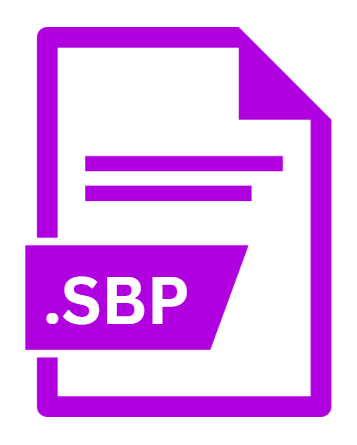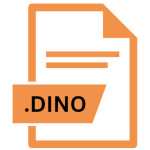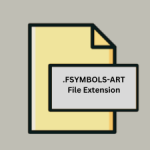.SBP File Extension

Sketchbook Express iCloud Image
| Developer | Autodesk |
| Popularity | |
| Category | Raster Image Files |
| Format | .SBP |
| Cross Platform | Update Soon |
What is an SBP file?
The .SBP file extension is associated with Sketchbook Express, a digital drawing application developed by Autodesk.
These files are primarily used for storing iCloud image data, enabling artists to save their works in the cloud and access them across multiple devices seamlessly.
This capability allows users to maintain continuity in their creative process, whether they are working on a tablet, smartphone, or desktop computer.
More Information.
Autodesk Sketchbook Express was first launched in the early 2000s as a streamlined version of the more comprehensive Sketchbook Pro. It was designed to provide essential drawing and painting tools in an easy-to-use interface.
When Apple introduced iCloud in 2011, Autodesk quickly adopted the cloud service to provide enhanced functionality for their users.
The .SBP file extension was introduced to allow Sketchbook Express users to store their drawings in the cloud. This integration aimed to ensure that users could access their artworks anytime, anywhere, without worrying about transferring files manually.
The initial purpose was to provide a seamless workflow for artists who frequently switch between different devices, ensuring their creative process remains uninterrupted.
Origin Of This File.
The .SBP file format was created as part of the integration of Autodesk’s Sketchbook Express with Apple’s iCloud service.
The primary aim was to facilitate the storage and synchronization of artwork in a cloud environment, making it easier for artists to manage their projects across different devices.
Autodesk, a leader in design software, saw the potential in leveraging cloud technology to enhance the user experience for digital artists, thus the .SBP file format was born.
File Structure Technical Specification.
The .SBP files are essentially package files that contain various elements required to recreate the artwork. These elements include:
- Layer Data: Information about each layer in the artwork, including opacity, blending modes, and visibility.
- Bitmap Data: Pixel data for each layer, typically stored in a compressed format to save space.
- Metadata: Information about the file such as the creation date, last modified date, canvas size, and resolution.
- Thumbnail: A small preview image of the artwork for quick reference in file browsers or the Sketchbook Express application.
Technically, .SBP files are compressed to optimize storage space and transfer speed over the internet. The compression method ensures that the files remain relatively small while preserving the quality and integrity of the artwork.
How to Convert the File?
Converting .SBP files to other formats involves using Sketchbook Express or other compatible software to open the file and then exporting it to a different format. Here are the steps:
- Open the .SBP file in Sketchbook Express: Launch the application and open the desired .SBP file.
- Export the File: Use the export function in Sketchbook Express to save the file in another format such as .PNG, .JPG, or .PSD. This is usually found under the ‘File’ menu with an ‘Export’ or ‘Save As’ option.
- Choose the Desired Format: Select the format you wish to convert the file to and save it to your desired location.
There are also online conversion tools and third-party software that can facilitate this process if Sketchbook Express is not available.
Advantages And Disadvantages.
Advantages:
- Cross-Device Synchronization: The primary advantage of .SBP files is the ability to sync artwork across multiple devices via iCloud. This allows artists to start a project on one device and continue working on it on another without any hassle.
- Backup and Security: Storing files in iCloud provides a level of backup and security. In case of a device failure, the artwork is still accessible from the cloud.
- Efficiency: The file format is optimized for space, which ensures that artworks do not take up excessive storage, making it efficient for cloud storage.
Disadvantages:
- Dependency on iCloud: Since .SBP files are designed for iCloud, users are dependent on having an iCloud account and sufficient storage space. This could be a limitation for users who prefer other cloud services.
- Compatibility Issues: .SBP files are specifically designed for Sketchbook Express and might not be compatible with other graphic design software, limiting the flexibility for users who might want to switch between different applications.
- Internet Requirement: Accessing and syncing .SBP files require an internet connection. Without internet access, users cannot retrieve or save their artwork to the cloud.
How to Open SBP?
Open In Windows
- Using Sketchbook: The latest versions of Autodesk Sketchbook can open .SBP files directly. Install the application, launch it, and open the .SBP file.
- File Conversion: If Sketchbook is not available, convert the .SBP file to a more widely supported format like .PNG or .JPG using an online converter and open it with any image viewer.
Open In Linux
Open In MAC
- Using Sketchbook: Similar to Windows, Autodesk Sketchbook on macOS can open .SBP files. Install the application from the App Store, open it, and load the .SBP file.
- iCloud Integration: If the .SBP file is stored in iCloud, it can be accessed directly through the Sketchbook app.
Open In Android
- Sketchbook App: The Sketchbook app for Android supports .SBP files. Install the app from Google Play Store, open it, and import the .SBP file.
- Cloud Services: If the file is stored in a cloud service like Google Drive, download it to your device and open it with the Sketchbook app.
Open In IOS
- Sketchbook App: On iOS devices, use the Sketchbook app available on the App Store. Open the app, and if iCloud is enabled, you can directly access and open .SBP files.
- File App: Use the Files app to locate the .SBP file in iCloud and open it with the Sketchbook app.













